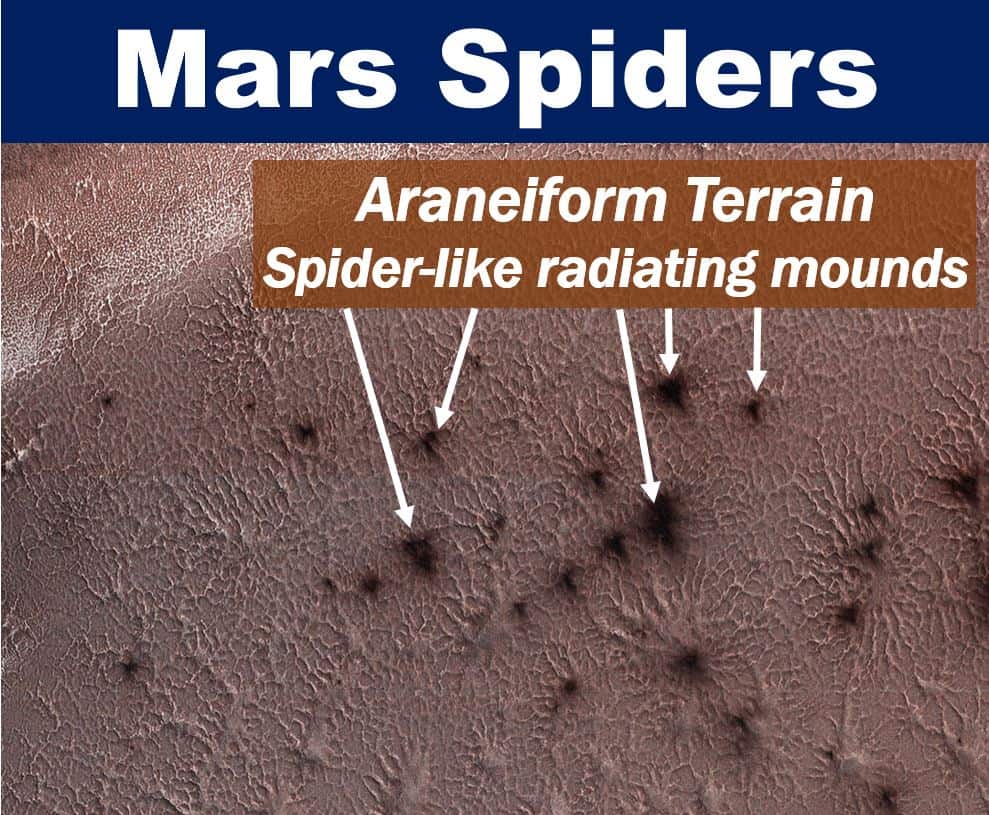NASA has posted an amazing image of Mars spiders. The photograph, from NASA’s Mars Reconnaissance Orbiter, shows a CO2 ice cap covering the region. As the Sun returns, what look like Mars spiders start to emerge on the landscape. CO2 stands for carbon dioxide.
However, these Mars spiders are not spiders at all. We call this type of land formation ‘araneiform terrain,’ i.e., spider-like radiating mounds.
These mounds form when CO2 ice below the surface warms up and releases.
Mars spiders are collections of dust
We do not have this type of active seasonal process on Earth.
Carbon dioxide on Mars sublimates as it warms, i.e., turns from solid to gas. Dry ice, on our planet, also does this. Subsequently, the gas builds up below the surface.
The CO2 gas, over time, accumulates in pressure. Eventually, it is strong enough to break through the ice as a dust jet.
The gas enters the atmosphere. Darker dust subsequently collects around the vent. Sometimes winds transport the dust to produce streaks.

Mars spiders are channels
The Mars spiders are what the sublimated CO2 leaves behind. They accumulate on the surface like etchings.
The spiders are actually channels, not little creepy-crawlies.
Regarding what look like Mars spiders, NASA said:
“The south polar terrain on Mars contains landforms unlike any that we see on Earth, so much that a new vocabulary is required to describe them.”
“The word ‘araneiform‘ means ‘spider-like.’ There are radially organized channels on Mars that look spider-like, but we don’t want to confuse anyone by talking about spiders, when we really mean channels, not bugs.”
